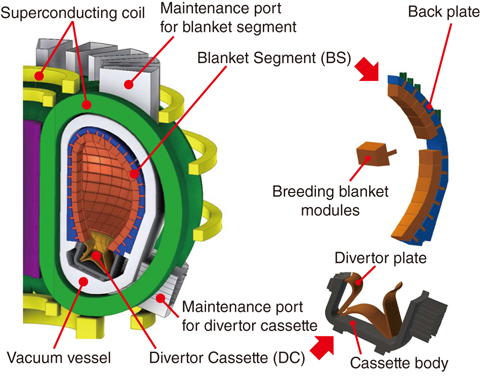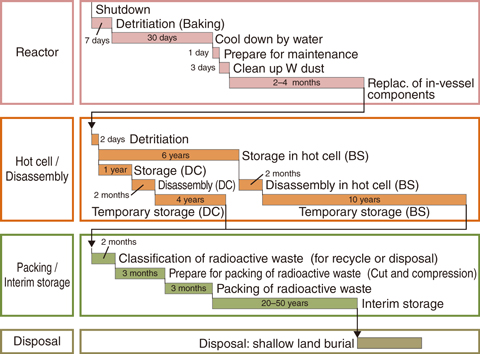
Fig.9-21 Configuration of the DEMO reactor

Fig.9-22 Radioactive waste-management scenarios for regular maintenance of a fusion DEMO reactor

Fig.9-23 The amount of the radioactive wastes generated by replacement of in-vessel components in the normal-operation cycle has been evaluated with a volume-reduction method
There is a concern regarding fusion reactors that the replacements of in-vessel components such as blanket segments (BS) and divertor cassettes (DC), as shown in Fig.9-21, may generate a considerable amount of radioactive waste and represent a serious environmental burden. In this study, we have considered a strategy for reducing the waste generated by replacement of the components. Thus far, studies on the recycling of fusion-activated materials have focused on reducing the amount of waste that requires final disposal. Due to the necessity of replacing the components, waste management is required during the operation of a fusion reactor. Therefore, an appropriate waste-management scenario should be developed from the conceptual-design stage.
We have developed a waste-management scenario for a fusion DEMO reactor based on the residual heat and dose rate of the used the components, as shown in Fig.9-22. The management scenario for the replacement of radioactive components has an impact upon the cooling time for residual heat reduction before the removal of components from the reactor, the design of the hot cell, and waste storage. The components are moved to a hot cell through a maintenance corridor after a cooling time in the vacuum vessel of approximately one month. In order to maintain the health of the removal components, the residual heat must be removed using active cooling to keep the temperature below 550 °C for a structural strength of F82H. In the hot cell, the used components are handled as follows: blanket modules are removed from a back plate by remote-handling equipment after cooling for 6 years. The radiation environment in the hot cell is estimated to be 100 Gy/hr. Next, the neutron multiplier and tritium breeder are recovered from each blanket module for recycling at a disassembling facility. After that, the empty blanket modules and divertor plates are cut into small pieces and stored in a container. The radiation environment in the facility is estimated to be 10 Gy/hr and storage will last for 10 years. After waste classification in accordance with radioactivity, the waste is packed and stored in interim storage for disposal.
We considered a strategy for reducing the radioactive waste generated when the components are replaced in the DEMO. We evaluated the amount of waste generated by replacing the components during the normal operation cycle. In Fig.9-23, we suggest that the amount of waste can be reduced to 20% by reusing the back plate and cassette body and by recycling the breeding and multiplying materials. This result suggests the necessity of implementing waste-reduction programs. However, reusing the back-plate and cassette body in the assembly operation may be difficult with the existing RAMI program. The volume reduction of waste is very important for commercial fusion plants. Therefore, R&D efforts toward the development of an assembly operation for the BS and the DC should be initiated in the DEMO. The study of waste management should continue to reduce the amount of radioactive waste produced and to generate greater public acceptance of the construction and operation of future fusion reactors.